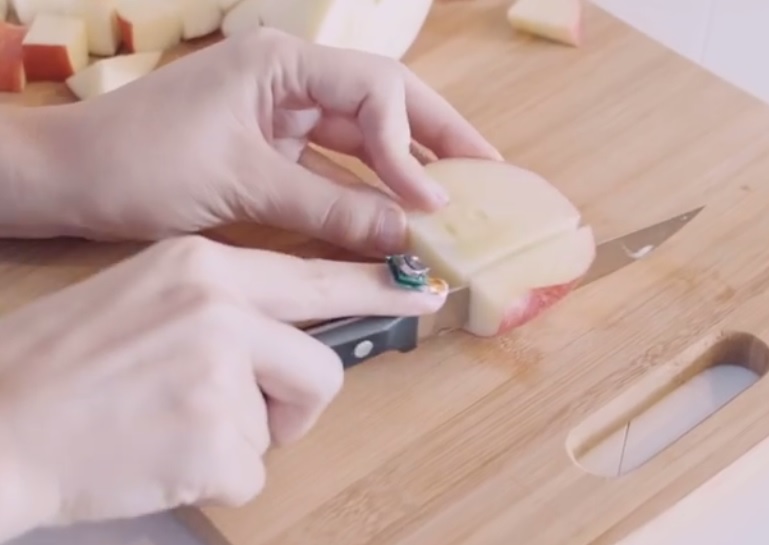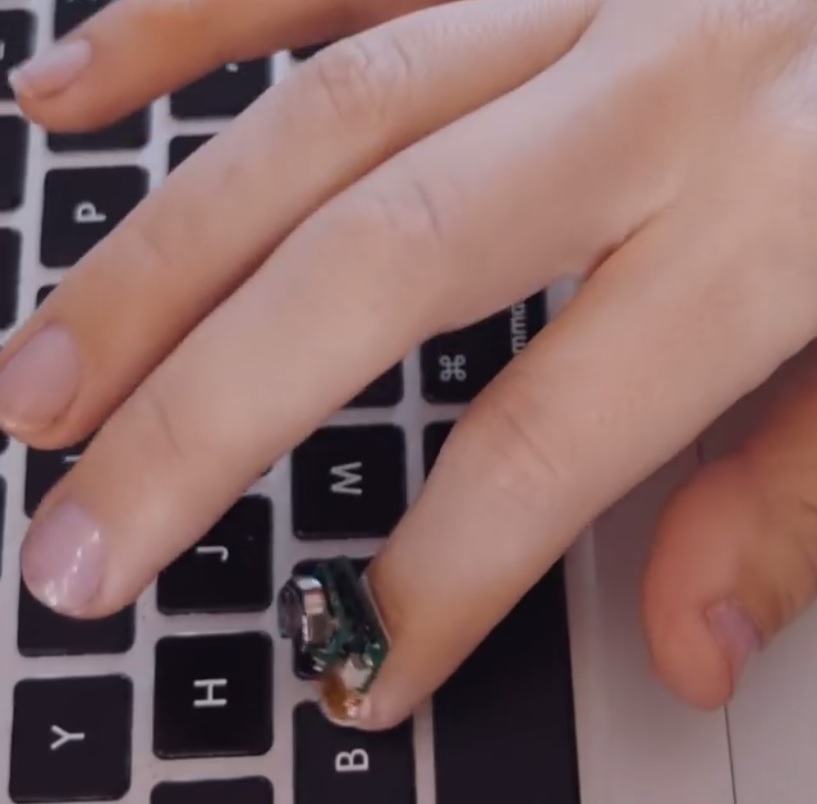Prototype (packageless) wearable wireless nail medical sensor from IBM Research
- Transfer

IBM Research talks about the development of a prototype wearable nail sensor that helps analyze and track symptoms and progression of diseases associated with movement disorders and not only.
The data of such a parameter as the force of compression, with the help of which the fingers of a person operate with objects, for medical purposes are very useful for analytical application in a wide range of human diseases.
The real-time data array can then be used to analyze drug efficacy in people with Parkinson's disease, levels of cognitive impairment in schizophrenia, monitor the cardiovascular state and diagnose causes of death from diseases of old age.

In the IBM Research division, one of the main research tasks is to better understand the progressive influence of diseases on the general state of human health, and how AI (hereinafter - Artificial Intelligence) by analyzing a large amount of data obtained using modern digital media. medical purposes, can safely study the current state of some parameters of the human body in its natural environment, potentially indicate critical indicators and predict the progression options understanding the correct vector for further treatment.
In a new study, published in the journal Scientific Reports, the IBM Research team details the first-of-its-kind prototype of the “wireless nail sensor,” which helps in real-time monitoring of certain parameters directly related to human health.
A wearable wireless device continuously measures data on the current pressure, bending and movement of a person’s nail elements, which are key indicators for determining the grip strength parameter.

This project began with attempts to digitally analyze some of the data on the condition of patients with Parkinson's disease. But immediately there were difficulties when working with data acquisition.
Since it was necessary to analyze and quantify the control group of patients, most of whom are elderly, and here the situation was aggravated by the fact that in such age groups the problematics of the condition and obtaining data from the skin is very difficult, because the skin of patients is often thin, loose and flabby .
One method of measuring the progression of Parkinson’s disease is to connect a set of sensors to the patient’s skin, which then record parameters such as the movement of body parts, muscle contractions, nerve cell activity, changes in the activity of sweat glands, which help analyze the intensity of a person’s emotional state.
But, unfortunately, in many elderly patients, connecting such sensors directly to the skin often causes discomfort and other negative medical problems, including infections.
It was here that a new solution was needed to accommodate the sensors (or even one, but a complex sensor, as it turned out later). So, we have come up with the use of a special design nail sensor and now we can use its potential in reality.

We interact with thousands of objects throughout the day, use our hands almost all the time, a huge array of data such as pressure tactile sensations, temperature, surface texture and much more can now be digitized and analyzed.

Our team realized that it would now be possible to digitally receive signals about how nails bend during the day, when we use our fingers to interact with the environment, and using further artificial intelligence and machine learning capabilities, we can implement an analysis program. and the monitoring of many of the human medical records derived from this data.

One of the functions of a person's nails is to focus the fingertip on the object being manipulated. It turns out that our nails all the time are imperceptibly deformed, bent and subjected to stereotypical movements, when we use our fingers to grab objects and even just when bending and unbending our fingers.
This deformation usually has a micron order and is not visible to the naked eye. However, it can be quite easily detected using a properly configured array of strain gauges.

For example, a typical human hair has a diameter of 50 to 100 microns, and an erythrocyte typically has a width of less than 10 microns.
Since the nail of a person is very durable, we decided to glue the sensor system of our sensor directly to the nail, without worrying about any problems arising earlier with attaching sensors to the skin.

Our experiments with a dynamometer showed that we can get a fairly stable signal from the nail surface to further analyze the data on the grip force in various types of finger movements.
We also found that it is possible to analyze even subtle movements of fingers according to data from nail deformation.

We were able to distinguish between typical daily activities that include pronation (turning movement of limbs) and supination (rotating movement of limbs), such as turning a key, opening a door handle, or using a screwdriver.
An even more subtle point of our software development is the analysis and recording of the movement of the fingers while writing, we trained the neural network and achieved an accuracy of 94% when recognizing numbers written with the finger on which the sensor is located.

In fact, our system consists of an array of micro strain gauges attached to the surface of the nail, a small computer that measures real-time strain values from sensors, collects accelerometer data and communicates the data with a smart watch or other wireless devices.
The analysis program also uses machine learning models to assess the occurrence of a state of bradykinesia, tremor and dyskinesia, which are symptoms of Parkinson's disease.
Thus, receiving digital data from the tips of our fingers, we found a new use for our nails, detecting and characterizing their subtle movements and changes in their parameters.
Our development will help detect the development of a huge number of diseases, as well as provide an opportunity to evaluate the effectiveness of the applied treatment methods designed to slow down these conditions.
Further use of systems based on such nail sensors will serve as a source of inspiration for the initial phase of the invention of a communication device for patients with paralysis of four limbs, which once could help paralytics to communicate.








